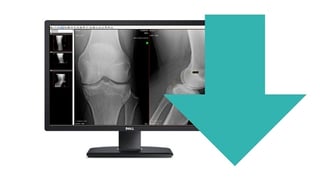Unnecessary medical imaging is a very real problem in the US, leading to longer wait times for diagnoses, increased healthcare expense, and potentially strained doctor-patient relationships. In addition to the delays, costs, and stress that redundant imaging can cause for patients, there are some modalities, such as CT scans, where cumulative radiation exposure is a concern.
Dr. Erik Korzen of Dynamic Physical Health specializes in physical medicine and pain management through conservative care. He believes there are multiple causes for the over-use of medical imaging. One is simply the ease of access to imaging centers and the fact that the technology is widely available. A physician simply writes an order, then the imaging center schedules an appointment. Once the procedure is performed, the images are viewed by a radiologist and returned to the ordering physician, usually all within 24-48 hrs.
Another is that it can be used as a substitute for accurate patient history and exam procedures. Dr. Korzen explained, “Healthcare providers sometimes utilize imaging as an alternative, rather than an adjunct, for diagnosis. Appropriate history-taking that involves a lengthier interaction with the patient and a thorough physical exam can generate a substantially different diagnosis list. While something like a tumor, bone spur, disc herniation can be visualized on imaging, it is not always the cause of the patient’s symptoms.”
There’s really no debate that imaging is an important diagnostic tool and helps ensure that follow-up medical procedures are chosen appropriately; however, redundant scans or unnecessary follow up with additional modalities can dangerously delay patient treatment. Lives are saved if the doctor can quickly make an accurate diagnosis based on initial imaging. This is particularly important in urgent medical scenarios such as symptomatic strokes, trauma, and rapidly progressing disease, such as some cancers.
Many studies about the overuse of medical imaging have been conducted over the past few years, and many more are on-going. Much of what is known regarding the effect of radiation exposure to humans came from the study of people exposed to radiation in Japan during World War II. More recently, there were three studies on this topic published in the JAMA Internal Medicine, along with an editorial calling for patient-facing physicians to collaborate more closely with radiologists to determine whether or not imaging is the appropriate solution. The authors of the editorial sited a “pressing need to perform imaging tests more wisely” and also stressed the importance of patient-involvement in decisions around imaging. The American College of Radiology and Radiological Society of North America, among others, have taken a stance and have implemented guidelines and initiatives to help manage this issue. A dedicated campaign, aptly named “Image Wisely,” was created to “lower the amount of radiation used in medically necessary imaging studies and eliminate unnecessary procedures.”
Redundant scans are problematic for several reasons. The first is the additional exposure for the patient, which adds to his or her lifetime accumulated dose. Second is that it delays the start of treatment while determining a diagnosis. And number three is cost, as repeated imaging studies can result in large fees for the patient and imaging centers because Medicare and insurance only reimburse the first facility that performed the scan. It is estimated that the US wastes approximately $30 billion per year on unnecessary imaging tests!
Image sharing software is one of the proposed solutions to redundant medical imaging. Dr. Korzen believes it “could alleviate some of these issues by simply allowing healthcare professionals to share images and co-manage a patient’s condition without unnecessary tests or multiple doctor visits. Image sharing would be especially useful if a patient has recently had imaging that is still applicable to their condition. In this instance, any additional imaging would be a waste of time and money, both for the physician and the patient.”
Fortunately, there are tools available that allow physicians and imaging centers to exchange and view medical images from different devices. Solutions like Vaultara’s image sharing platform make workflows more efficient. When a physician has images readily available, diagnoses can be made quickly, without redundant scans.

